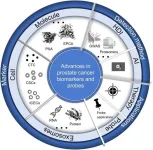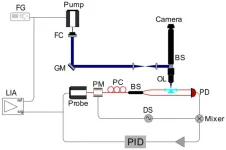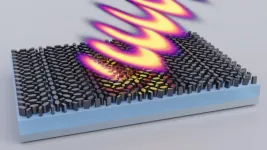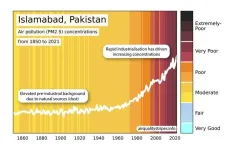Slow down in China’s methane emission growth
2024-08-23
(Press-News.org)
Methane is a potent greenhouse gas. Since the Industrial Revolution, atmospheric methane concentrations have nearly doubled, with its radiative forcing accounting for one-third of all greenhouse gases. As one of the world's largest methane emitters, China made a clear commitment as early as 2007 to "strive to control the growth rate of methane emissions." The country's 12th, 13th, and 14th Five-Year Plans all proposed measures to control methane emissions. In 2023, China released the "Methane Emission Control Action Plan," which provides a comprehensive strategy for controlling methane emissions.
Accurately quantifying methane emissions and their contributions from various sectors is crucial for tracking changes in emissions and assessing the effectiveness of reduction measures. The "Methane Emission Control Action Plan" comprehensively calls for the strengthening of methane monitoring, accounting, reporting, and verification systems. China's methane emission accounting started late, with a weak foundation, and there is an urgent need to enhance emission control and monitoring capabilities. In the past, the international community generally believed that China's methane emissions had a significant impact on the global increase in methane concentrations. However, the latest research from the Institute of Tibetan Plateau Research, Chinese Academy of Sciences, indicates that since 2016, the growth rate of China's methane emissions has significantly slowed, and its contribution to global methane emissions is decreasing. This research was published in the National Science Review under the title "Slow Down in China’s Methane Emission Growth."
This study, based on China's independent global atmospheric inversion system "GONGGA", successfully developed the GONGGA-CH4 system, which boasts high inversion accuracy and low computational cost. Using this system, GOSAT satellite methane column concentration observations were assimilated to systematically assess global and China's methane emissions from 2011 to 2021. The results revealed that China's methane emission growth significantly slowed from 2016 to 2021 (0.1±0.3 Tg CH4 yr-2), in stark contrast to the higher growth observed from 2011 to 2015 (0.9±0.5 Tg CH4 yr-2). Meanwhile, global methane emissions accelerated during the same period (2016 to 2021) (Figure 1).
Compared to previous inversion methods, the GONGGA-CH4 atmospheric system distinguishes major methane emission sectors using a unique 4DVar regularized multi-factor joint inversion technique. The study's results indicate that the reduction in agriculture and wetland emissions is the primary reason for the slowdown in China's methane emission growth (Figure 2). Previous studies generally estimated that methane emissions from China's rice paddies accounted for about 30% of global rice paddy emissions, with straw return measures leading to increased methane emissions from rice fields. However, the GONGGA-CH4 system's inversion results provide a different perspective: as most rice paddies have achieved stable straw return in recent years, the rice planting area has become the main driver of changes in methane emissions, with its decrease leading to a reduction in agriculture methane emissions since 2016. Furthermore, the study found that the drier climate conditions in southern China in recent years have significantly reduced wetland methane emissions. This contrasts sharply with the rising methane emissions trend in tropical regions globally, further highlighting the substantial regional differences in the impact of climate change on methane emissions. However, the study also noted that although China's coal mine methane emissions briefly decreased following the implementation of the "shutdown of small coal mines" energy policy, recent increases in energy demand have led to a significant rise in coal methane emissions. This underscores the ongoing challenges China faces in controlling methane emissions.
Dr. Zhao Min, at the Institute of Tibetan Plateau Research, Chinese Academy of Sciences, and the first author of the paper, explained that due to methane's relatively short atmospheric lifetime (about 10 years), reducing methane emissions is considered a quick and effective means of mitigating global warming. The successful development of the GONGGA-CH4 system lays a solid foundation for China's active participation in the Global Carbon Project's methane emission assessments in the future. This is crucial for achieving the goal set by the Paris Agreement to limit global temperature rise to below 1.5 ℃.
The findings were published online on June 26, 2024, in the National Science Review. The study was co-corresponding authored by Researcher Xiangjun Tian and Associate Researcher Yilong Wang. This research was supported by the Second Tibetan Plateau Scientific Expedition and Research Program (2022QZKK0101), the National Natural Science Foundation of China (41988101, 41975140, 42001104), and the Young Scholars Innovation Program of the Key Laboratory of Earth System and Resources Environment of the Tibetan Plateau (TPESER-QNCX2022ZD-01).
END
[Attachments] See images for this press release:
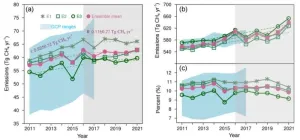
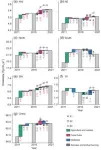
ELSE PRESS RELEASES FROM THIS DATE:
2024-08-23
The income and education levels of a child’s environment determine their relationship to nature, not whether they live in a city or the countryside. This is the finding of a new study conducted by researchers at Lund University, Sweden. The results run counter to the assumption that growing up in the countryside automatically increases our connection to nature, and yet the study also shows that nature close to home increases children’s well-being.
There is a general concern that, with urbanisation, people have lost contact with nature. According to research, less contact ...
2024-08-23
An international study led by Institute of Natural Resources and Agrobiology of Seville (IRNAS-CSIC), of the Spanish National Research Council (CISC), has shown that as the number of global change factors increases, terrestrial ecosystems become more sensitive to the impacts of global change. The results, published in the prestigious journal Nature Geoscience, show that the resistance of our ecosystems to global change decreases significantly as the number of environmental stressors increases, especially when this stress is sustained over time.
This is the conclusion reached by the Biodiversity and Ecosystem Functioning ...
2024-08-23
Researchers at Rutgers University in New Jersey have discovered that a protein produced by parasitic worms in the gut enhances wound healing in mice. The study, to be published August 23 in the journal Life Science Alliance (LSA), reveals that applying the protein to skin wounds speeds up wound closure, improves skin regeneration, and inhibits the formation of scar tissue. Whether the protein can be harnessed to enhance wound healing in human patients remains to be seen.
Skin wounds must be rapidly closed in order to prevent infection, but rapid wound closure can favor the development of scar tissue instead of properly regenerated skin. The balance between scarring ...
2024-08-23
In a recent comprehensive review published in Cyborg Bionic Systems, researchers led by Keyi Li from the General Hospital of Northern Theater Command in Shenyang, along with international collaborators, detail significant advances in the identification and application of biomarkers for prostate cancer (PCa). This critical insight is pivotal as prostate cancer remains one of the most common malignancies among men globally, emphasizing the urgent need for effective diagnostic and therapeutic strategies.
Prostate cancer is characterized by a multitude of molecular aberrations that complicate its early ...
2024-08-23
A team of researchers led by Professor Sebastian Deindl at Uppsala University has developed a pioneering method that vastly improves the ability to observe and analyse complex biological processes at the single-molecule level. Their work is set to be published in the upcoming issue of the journal Science.
“With our new technique, we can now extend single-molecule biophysics to the genome scale. This advance is expected to significantly deepen our understanding of how nucleic-acid interacting proteins function in ...
2024-08-23
The detection of individual particles and molecules has opened new horizons in analytical chemistry, cellular imaging, nanomaterials, and biomedical diagnostics. Traditional single-molecule detection methods rely heavily on fluorescence techniques, which require labeling of the target molecules. In contrast, photothermal microscopy has emerged as a promising label-free, non-invasive imaging technique. This method measures localized variations in the refractive index of a sample's surroundings, resulting from light absorption by sample components, which induces temperature changes in the surrounding region. Whispering ...
2024-08-23
Dementia with Lewy bodies is a type of dementia that is similar to both Alzheimer’s disease and Parkinson’s disease but studies on long-term treatments are lacking. A new study from Karolinska Institutet in Sweden, published in Alzheimer’s & Dementia: The Journal of the Alzheimer's Association, highlights the potential cognitive benefits of cholinesterase inhibitor treatment.
Lewy body disease, which includes dementia with Lewy bodies (DLB) and Parkinson’s disease with and without dementia, is the second most common neurodegenerative disorder, following Alzheimer’s disease. DLB accounts for approximately ...
2024-08-23
NEW YORK, August 23, 2024 — In a groundbreaking advancement, researchers with the Advanced Science Research Center at the CUNY Graduate Center (CUNY ASRC) have experimentally demonstrated that metasurfaces (two-dimensional materials structured at the nanoscale) can precisely control the optical properties of thermal radiation generated within the metasurface itself. This pioneering work, published in Nature Nanotechnology, paves the way for creating custom light sources with unprecedented capabilities, ...
2024-08-23
University of Leeds News
Embargoed until 23 August 10:00 BST
A selection of AQ Stripes graphic images are available here
The global concentrations of one of the main air pollutants known to affect human health have been graphically illustrated for the first time by a team of scientists.
The Air Quality Stripes which were created by the University of Leeds, the University of Edinburgh, North Carolina State University, and the UK Met Office, starkly contrast the significant improvements in air quality across much of Europe with the alarming deterioration in parts ...
2024-08-23
Still unknown what causes neurological complications of COVID-19 including ‘long COVID,’ ‘brain fog’ and loss of taste and smell
Viruses with a deletion in the spike protein are better able to infect the brains of mice
‘These findings suggest there might be treatments that could work better to clear the virus from the brain’
CHICAGO --- Scientists have discovered a mutation in SARS-CoV-2, the virus that causes COVID-19, that plays a key role in its ability to infect the central nervous system. The findings may help scientists understand its neurological symptoms and the mystery of “long COVID,” and ...
LAST 30 PRESS RELEASES:
[Press-News.org] Slow down in China’s methane emission growth




